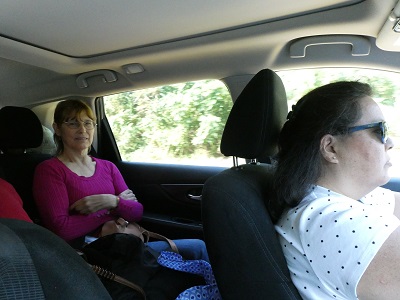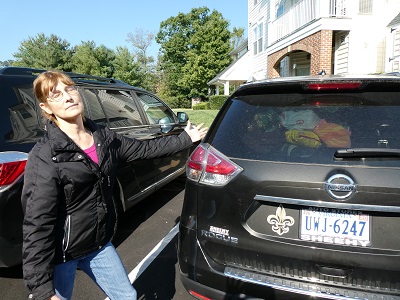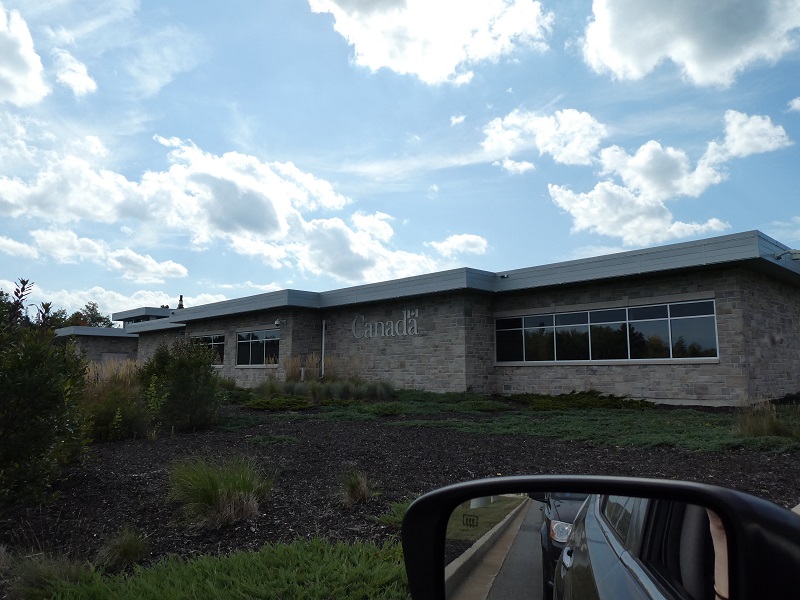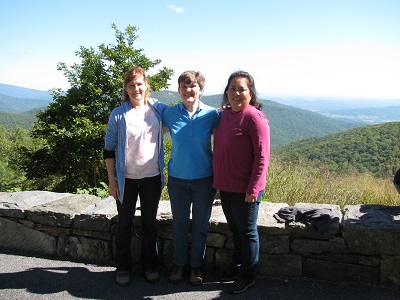My series Transcending: They’ll Know Us By Our Love is about why the church should welcome and affirm LGBTQ people, with a special emphasis on transgender people, like my own daughter.
Let me sum up what I’ve posted so far:
The Situation told how my church at the time was considering adopting a policy that declared that marriage is only for one man and one woman for a lifetime and that when transgender people attempt to change their bodies in any way, that’s opposed to God’s design. I disagreed strongly with that position and still hoped they would not adopt the policy.
In Creation, I looked at the one Bible passage the leadership came up with in saying that transgender people changing their bodies is opposed to God’s design. This is not at all consistent with any other policy at that church, as they freely allow people to make any other changes to their bodies: wear glasses or braces, color their hair, get any other surgery, get cochlear implants.
In The Science, I talked about a few (only a few) of the many studies that would seem to indicate that gender is something we’re born with — and it doesn’t necessarily match our external genitalia. So it is biological — in the brain.
In Self-Definition, I talked about how abusive it is to refuse to adopt someone’s definition of themselves because you think you know better.
In What Does the Bible Say? I looked at what the Bible says about transgender people and also what it says about making up policies against them.
In Not Conforming to the World, I talk about how the church should be more welcoming and affirming of outsiders, not less.
In Choice and Non-Choice, I present some of the multitudinous evidence that LGBTQ people are born that way, created by God that way. The only choice they face is whether or not to admit to themselves and to the world who they truly are.
In Interpretation, I pointed out that believing that same-sex marriage is sinful or a transgender person changing their bodies is sinful depends on your interpretation of only a few passages of Scripture. That interpretation is questionable and many, many Christians interpret them differently. Indeed, I quoted a scholar of ancient Greek and Roman literature who makes a strong case that we should interpret them differently.
In Gender-Expansive Children, I looked in detail at a position paper put out by the American Academy of Pediatrics as to best practices for supporting and caring for transgender children. Since then, I’ve found position papers from many more medical and psychological organizations. At one point, I hoped to look at more of them in detail. But wait a minute — why is a church arguing that transgender people shouldn’t get the most accepted medical treatment because they don’t think it’s effective? And that argument did come up. It’s pretty easily refuted with these papers and studies — but even if the established treatment were ineffective in making transgender people more satisfied with their lives (It’s not!), what would that have to do with whether it’s sinful or not? (If you’re actually contemplating medical or surgical treatment — by all means look up the studies and the statistics on effectiveness. But even if it were ineffective, that doesn’t make it sinful to try it.) This post and the paper quoted concludes by advising parents the same way the church should also be advising them: “they do want parents to assure their children that they are loved unconditionally, ‘however they express themselves and whoever they grow up to be.'”
I wrote Saying Farewell after my church did in fact adopt the policy.
My Gracious Argument post reflected some things I learned in this highly emotional discussion.
It’s been two months since that last post, and I’ve been thinking about posting more ever since, so I do have a lot to cover. I will try to make this coherent!
First, I do want to state that I am extremely happy with my new church, a local United Methodist Church. Now, the United Methodists as a whole do not have any policy about transgender people. They also allow women to be pastors, so they more genuinely reflect Galatians 3:28 — “There is neither Jew nor Gentile, neither slave nor free, nor is there male and female, for you are all one in Christ Jesus.”
The denomination as a whole is not yet affirming of same-sex marriage — but the pastor of this church is one of the leaders in the movement to change that. When I went to a congregational meeting and he explained how the prophetic tradition calls us to change — it brought tears to my eyes that instead of arguing with the pastor, the pastor was presenting biblical arguments for being inclusive.
I’ve been thinking about the Science of Gender, too. Scientific American recently published a blog post titled “Stop Using Phony Science to Justify Transphobia.” It explains how we get our biological sex in detail. And we discover: It’s complicated!
I’ve had several different people who believe transgender people are sinning tell me that even if my child gets surgery, that won’t change “his” DNA.
So I asked them, Oh, have you had my child’s DNA tested, because I never did?
More than one person scoffed at my question — but it’s completely legitimate, as this article explains: “Biological sex is far more complicated than XX or XY (or XXY, or just X). XX individuals could present with male gonads. XY individuals can have ovaries.” And then it explains how that works.
I’ve heard an anecdote that a high school biology teacher stopped having his students test their DNA, because any time someone came out with chromosomes different than expected, that kid would get very upset. And this happened often enough, he had to stop that experiment. I’ve also read stories of people who found out as teens or adults that internally they had intersex characteristics. One person found out when they were getting ready to have gender confirmation surgery. Another person found out that was why they were infertile. Our bodies are complex. Chromosomes do not absolutely define your gender, or even what sex organs you have.
You can read the blog post and read the studies it links to about how scientists have worked to figure out how the body forms organs of one sex or another (or both). It’s complicated. It turns out that many factors come into play, even environment.
The paper makes a strong — and scientific — case that sex is not binary. The process of forming gender is long and complicated and not as simple as what chromosomes a fetus has. Do people really believe that just because God created Adam and Eve male and female, God will now make sure that every step of the process of forming biological sex in every single baby will always go smoothly?
Even my former church said that it’s not sinful for intersex people to change their bodies. But apparently they only accept as intersex people who are visibly neither distinctly male nor female. However, with that admission, they are acknowledging that the process of forming biological sex does not always go smoothly. Yet they’re assuming it’s only going to deviate from the “norm” in ways that we can see from outside the body. That doesn’t match many intersex people with internal organs of both genders. How much testing will they do to determine whether people are sinning or not?
As the Scientific American blog post sums up: “the science is clear and conclusive: sex is not binary, transgender people are real.”
Okay, all that is background! Now for what I wanted to talk about: The Council at Jerusalem in Acts 15.
I’m still reading through the New Testament on a schedule put out by my former church, and we recently read Acts 15. Verse 19 jumped out at me:
It is my judgment, therefore, that we should not make it difficult for the Gentiles who are turning to God.
The background of the Council at Jerusalem was that many Gentiles were turning to God. And many Jews, who were the first followers of Jesus, thought that the Gentiles should follow the Law and become circumcised in order to be saved.
This was a big controversy — they had believed you approach God by keeping the Law. But they held a council and listened to the leaders who had seen Gentiles receive Christ, and they concluded that following Jesus was not the same thing as keeping the Law.
Honestly? I think a church having a Code of Conduct or a “Christian Living Statement” is setting up new rules, new laws.
I also think it’s interesting to look at the rules the leaders at Jerusalem did send out:
Instead we should write to them, telling them to abstain from food polluted by idols, from sexual immorality, from the meat of strangled animals and from blood.
This is the one time you see the New Testament church setting up rules — and three of the four are no longer anything anybody ever worries about.
And even those rules were presented as suggestions, not as requirements in order to be members of the church. The letter to the churches says, “You will do well to avoid these things.”
We are no longer under the Law. We are under grace.
Paul expounds on this controversy and these ideas in the book of Galatians. In the first three chapters he talks about faith and works of the law — the very passage that culminates in these words:
So in Christ Jesus you are all children of God through faith, for all of you who were baptized into Christ have clothed yourselves with Christ. There is neither Jew nor Gentile, neither slave nor free, nor is there male and female, for you are all one in Christ.
We have established that gender is not binary and transgender people are real.
Now let us not make it difficult for the transgender people who are turning to God.
Let us neither make it difficult for the gay person or the lesbian or the nonbinary person.
Many Christian Jews of Paul’s day honestly believed that in order to approach God, a person needed to be circumcised. But the leadership came to see that rule was only making things difficult that should not be difficult.
Coming to God and being part of the body of Christ isn’t supposed to depend on following rules. Walking with Jesus is about love.
The eye cannot say to the hand, “I don’t need you!” (I Corinthians 12:21)
Let’s not make it difficult for anyone who’s turning to God. The body of Christ needs every part.
Just as a body, though one, has many parts, but all its many parts form one body, so it is with Christ. For we were all baptized by one Spirit so as to form one body — whether Jews or Gentiles, slave or free — and we were all given the one Spirit to drink. Even so the body is not made up of one part but of many.
That’s I Corinthians 12, and you see that again Paul is saying that we need everyone, all types of people.
Please look out before making up rules. Let’s not make it difficult to be part of the body of Christ.
Shouldn’t they know us by our love?





